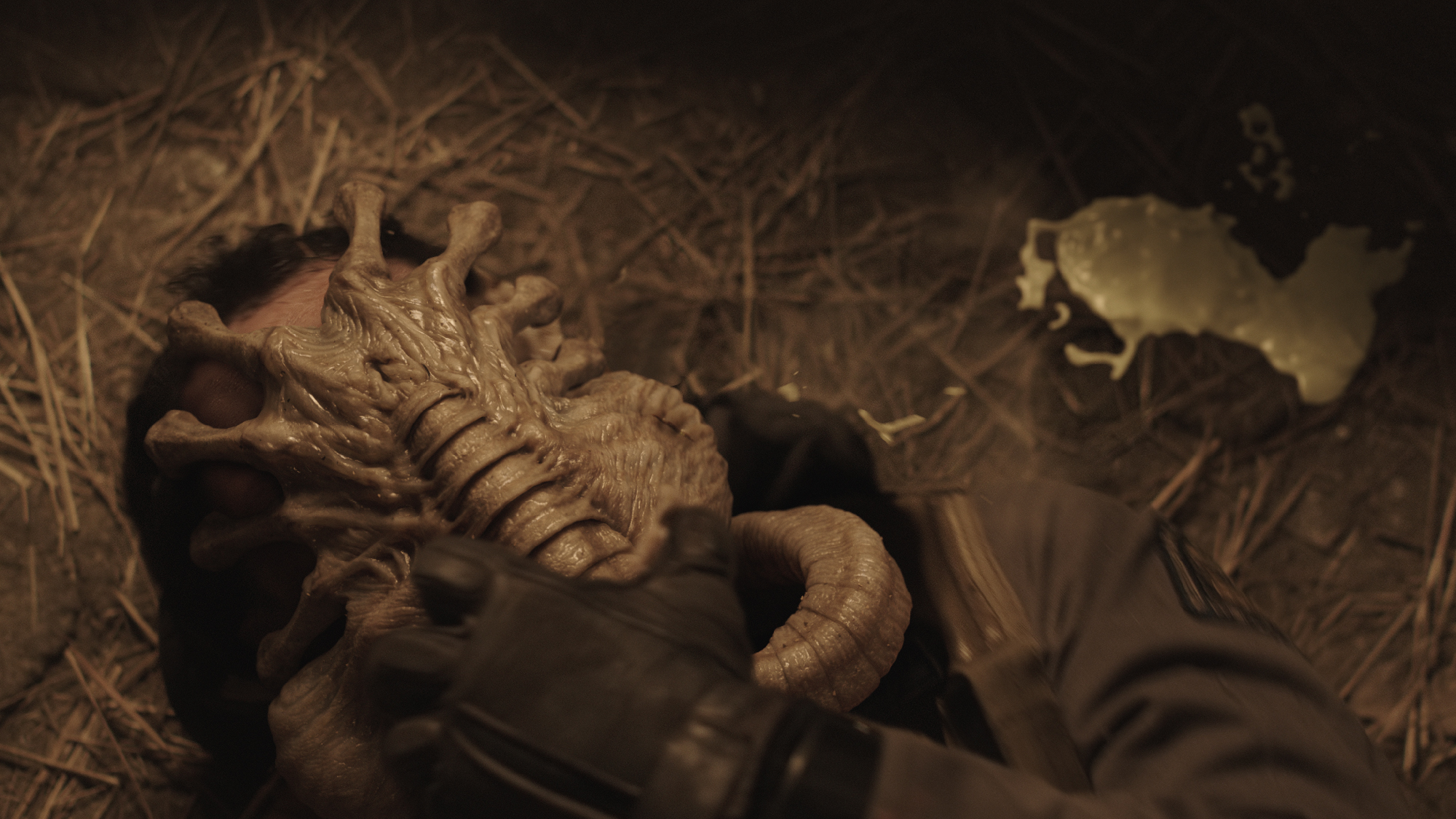
Photo copyright © 2017 20th Century Fox. All Rights Reserved.

Photo copyright © 2017 20th Century Fox. All Rights Reserved.
By IAN FAILES
In Alien film lore, the facehugger is one of the most recognizable creatures, and among the scariest. It is the second parasitic stage in the life cycle of a Xenomorph and, as the name suggests, wraps itself around the face of its victim.
In Alien: Covenant, the facehugger once again wreaks havoc on a hapless crew of space explorers. In previous film incarnations, the creature was realized as a practical gag, but in this new Ridley Scott adventure it was a digital creation by Framestore. However, the creature effects team still fabricated practical facehugger puppets to use on set for the shoot.
“(Director) Ridley (Scott) was very keen on showing how tight the legs had a grip. So we ended up actually creating a digi-double with a CG hair groom so we could show hair going over the facehugger legs.”
—Stuart Penn, Visual Effects Supervisor, Framestore
Creatures Inc. and Odd Studio collaborated on the creature and prosthetic effects for Alien: Covenant. Multiple versions of the facehugger were constructed as stand-ins during filming. One could scurry along the ground or up walls as a rod puppet in the well-known spidery fashion. Another was made to shoot out of the eggs that the synthetic David (Michael Fassbender) has been breeding.
“Those egg shots were some of my favorite moments on the film,” states co-Creature Effects Supervisor Adam Johansen from Odd Studio. “It was literally a cannon that we had underneath the stage from which we could fire out a soft foam facehugger. It was all curled up and we shot it out, and as it shot out the legs just came out, and we basically just bounced this thing off the stunt double’s head.”
Ultimately, since the facehugger would be shown chaotically jumping around, attacking, being shot at, and retreating, it became a digital visual effect. That work was completed by Framestore under Visual Effects Supervisor Stuart Penn.
“We started with the inside out basically We had the puppet scanned. And then we actually built an anatomy for its insides, designed the muscles and the egg sacs, and gave them some internal structure so that there would be properly connecting tendons up from the bones to other parts.”
—Stuart Penn, Visual Effects Supervisor, Framestore
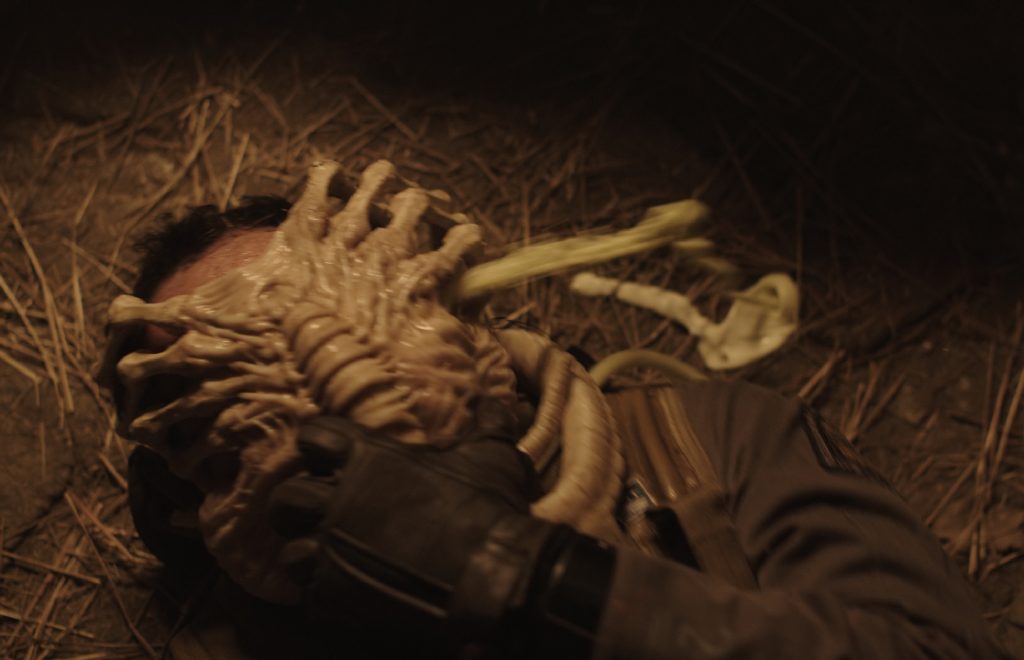
Original plate. Photo copyright © 2017 20th Century Fox. All Rights Reserved.
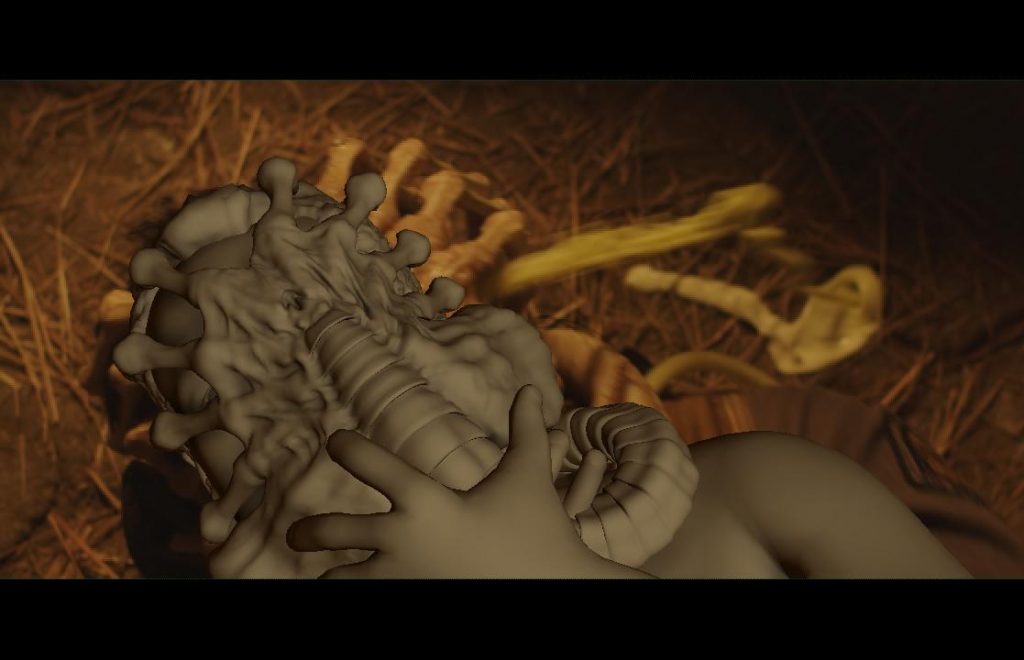
Animation pass. Photo copyright © 2017 20th Century Fox. All Rights Reserved.
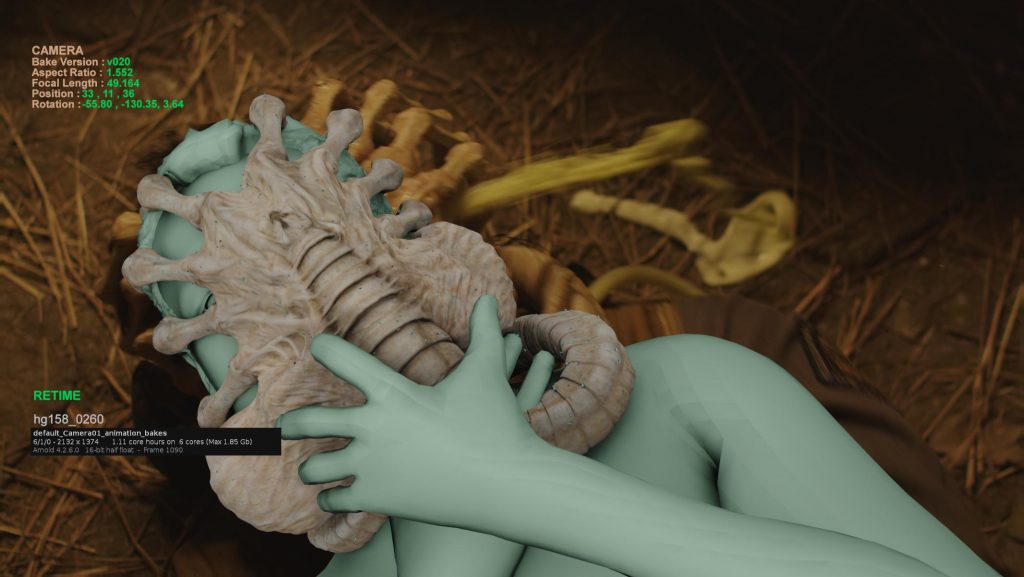
Render pass. Photo copyright © 2017 20th Century Fox. All Rights Reserved.
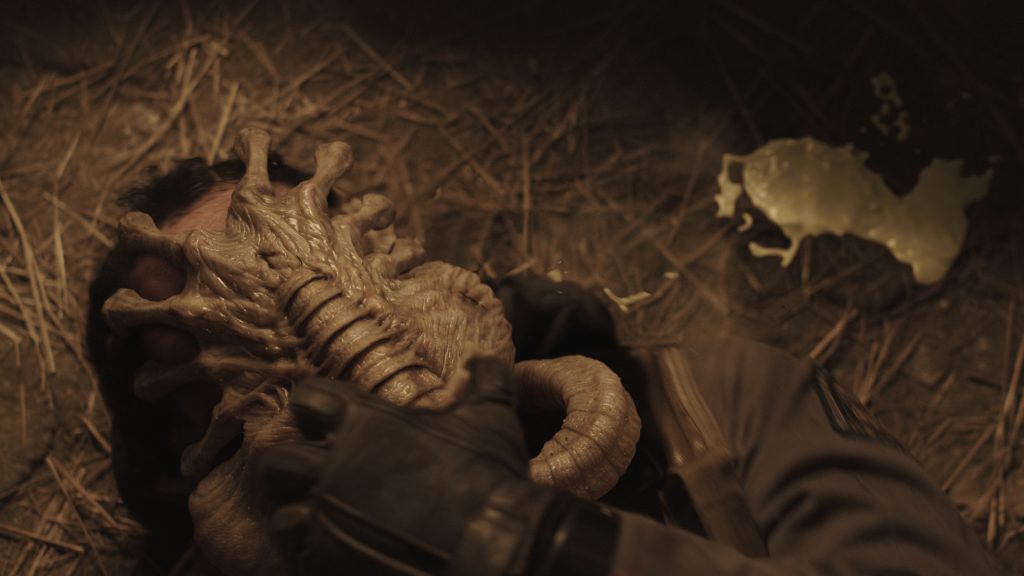
Final shot. Photo copyright © 2017 20th Century Fox. All Rights Reserved.
Framestore began its work on the facehugger with some animation tests prior to principal photography. After considering some snake and spider reference, “it was clear that walk-and-run cycles weren’t going to cut it for what we needed,” recalls Penn. “It moved so quickly and changed direction very quickly – it was diving around – you often barely see it, it’s so fast when it’s running. So we really had to do different animation for every shot.”
On set, the practical puppets were used and scenes were also filmed with clean plates. Framestore’s final approach to the movement of the facehugger was based on a study of its unusual spider-like legs and body.
“We started with the inside out basically,” says Penn. “We had the puppet scanned. And then we actually built an anatomy for its insides, designed the muscles and the egg sacs, and gave them some internal structure so that there would be properly connecting tendons up from the bones to other parts.”
“Those egg shots were some of my favorite moments on the film. It was literally a cannon that we had underneath the stage from which we could fire out a soft foam facehugger. It was all curled up and we shot it out, and as it shot out the legs just came out, and we basically just bounced this thing off the stunt double’s head.”
—Adam Johansen, Co-Creature Effects Supervisor, Odd Studio
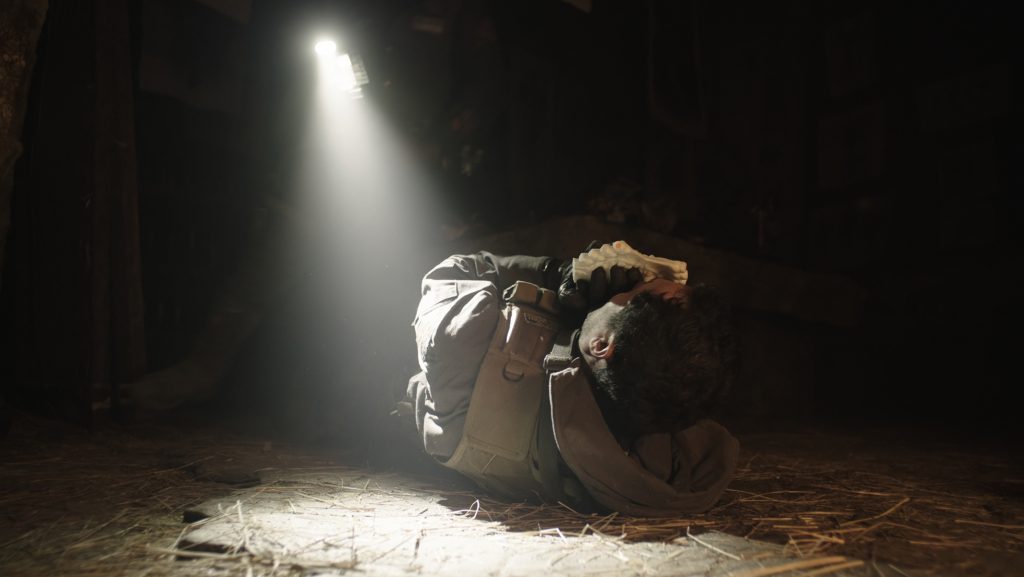
Original plate. Photo copyright © 2017 20th Century Fox. All Rights Reserved.
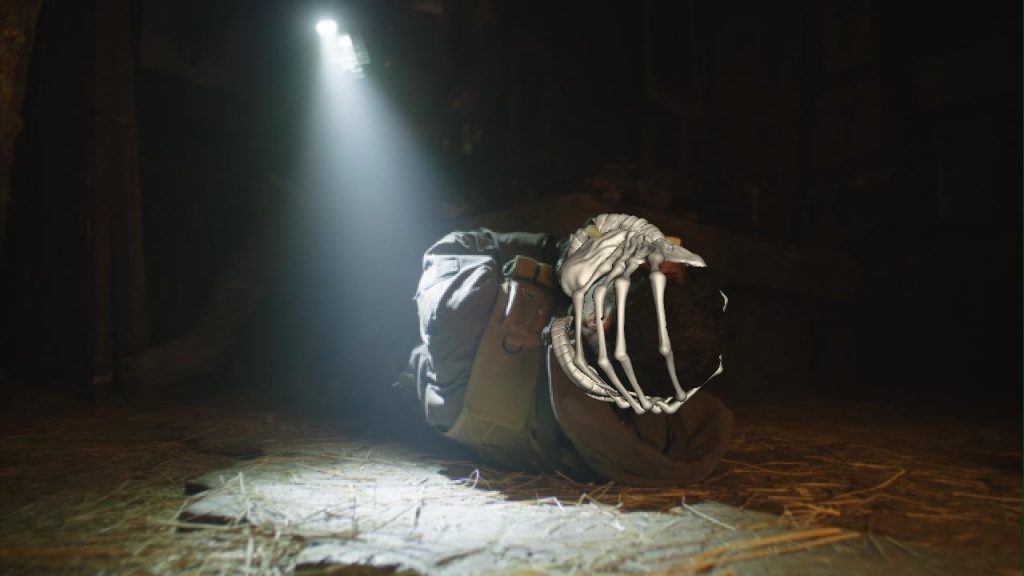
Animation pass. Photo copyright © 2017 20th Century Fox. All Rights Reserved.
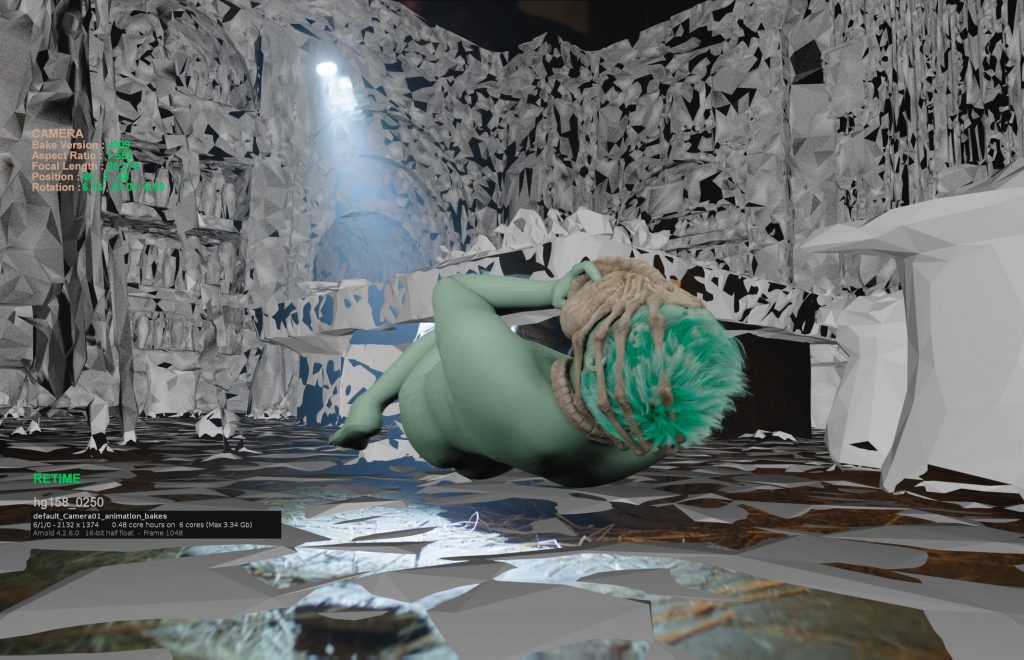
Render pass. Photo copyright © 2017 20th Century Fox. All Rights Reserved.
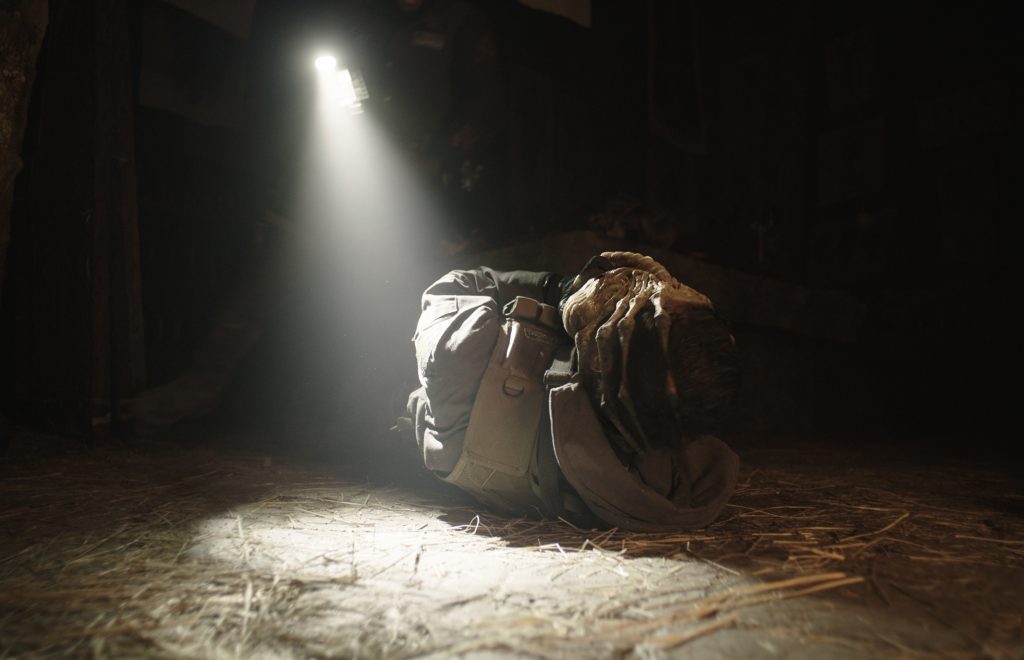
Final shot. Photo copyright © 2017 20th Century Fox. All Rights Reserved.
“The legs are the only bits that are really solid,” adds Penn. “They’re really hard. They’ve just got a thin length of skin over them. But the rest of the facehugger is quite fleshy and muscled. We built the muscles inside and then we have a skin simulation over the top of it. So the muscles are all dynamic in the rig.”
Shots of the facehugger gripping onto the face of a victim began with the practical creature, which Framestore replaced with its digital replica to form a tight fit. “Ridley was very keen on showing how tight the legs had a grip,” says Penn. “So we ended up actually creating a digi-double with a CG hair groom so we could show hair going over the facehugger legs.”
Despite the digital nature of the final shots, Penn says the practical puppets were crucial. “It’s obviously great reference for us. It’s also good reference for Ridley and the actors and the director of photography on set. And it’s incredible for editorial purposes. As soon as they’re shooting they can put together an edit which shows what was going on, whereas otherwise they’d only have lots of clean plates. That means they can actually get a really good assembly together which had all the action.”
“It was clear that walk-and-run cycles weren’t going to cut it for what we needed. It moved so quickly and changed direction very quickly – it was diving around – you often barely see it, it’s so fast when it’s running. So we really had to do different animation for every shot.”
—Stuart Penn, Visual Effects Supervisor, Framestore
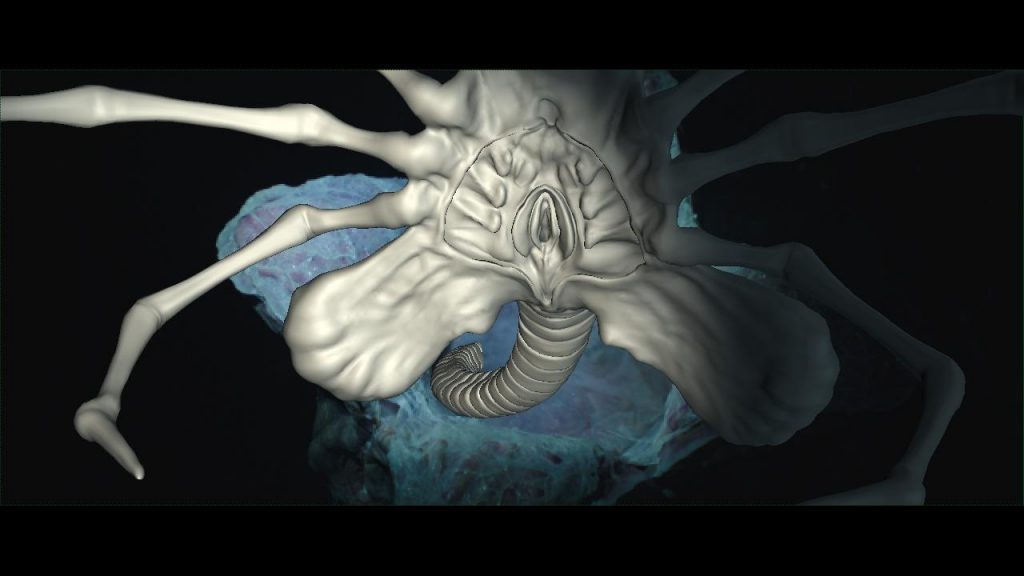
Animation pass. Photo copyright © 2017 20th Century Fox. All Rights Reserved.
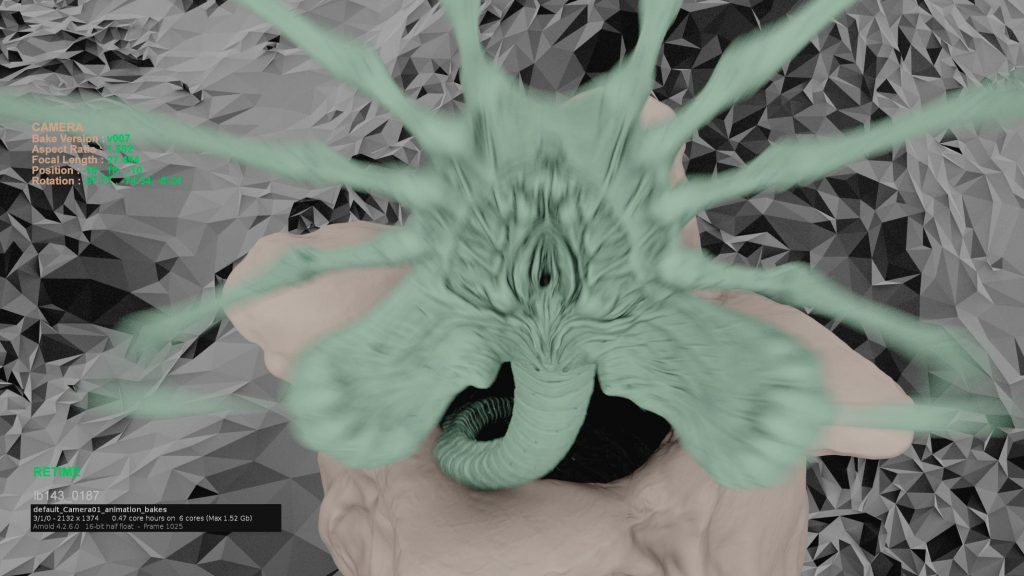
Render pass. Photo copyright © 2017 20th Century Fox. All Rights Reserved.

Final shot. Photo copyright © 2017 20th Century Fox. All Rights Reserved.